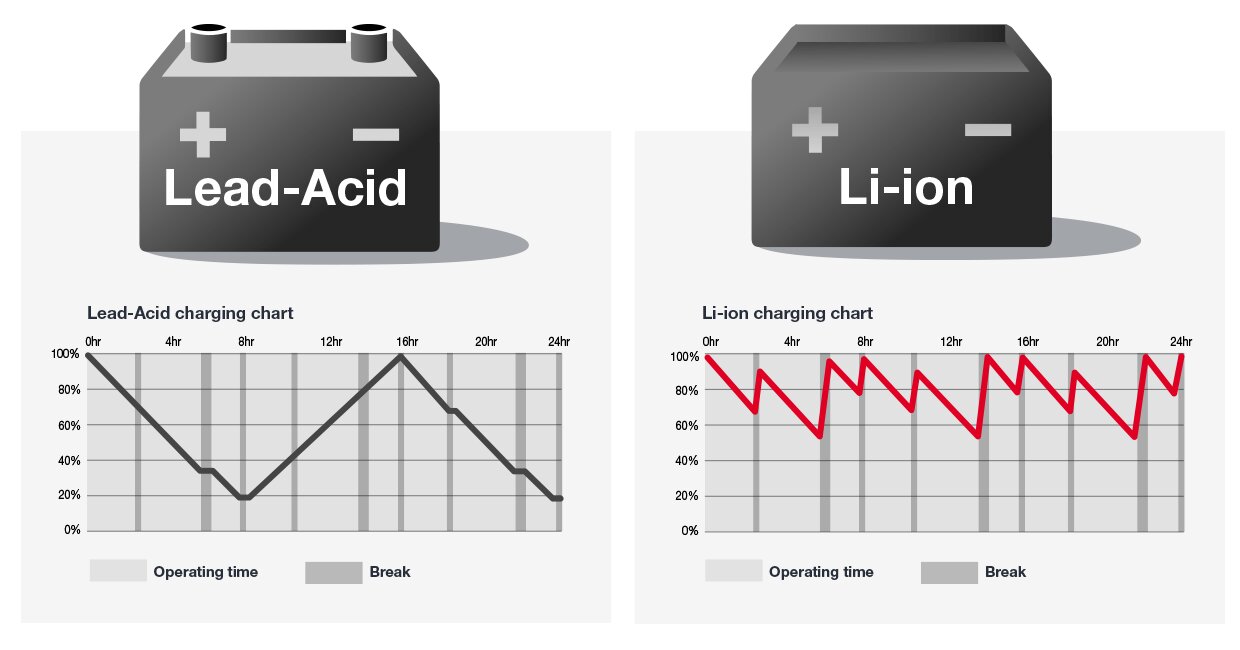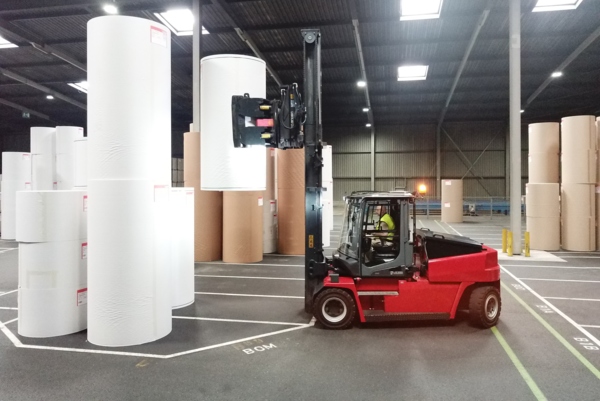
Power up
New lithium batteries make electric forklifts an even more viable alternative to diesel vehicles.
Electric forklifts have been around for years, but some recent developments with both battery technology and an introduction of more powerful forklifts have made the industry more receptive to the idea of switching over.
“Major companies in big industries, such as the automotive industry, are driving the development in part because of environmental policies and directives they are required to follow. In response, smaller companies are also switching to electric trucks, even though the development is driven by the major players in different industries,” says David Malmström, Business Development Manager Kalmar Forklift trucks.
Increasing demand for electric trucks
One industry that needs to take environmental values into consideration is forestry.
“There’s a major push to switch to electric trucks in both wood and paper industries. All the major players in Europe are doing it, there’s no turning back. In the last five years, our sales of electric forklifts have doubled and the growth is only accelerating,” notes Henrik Johansson, Segments Solution Sales Manager, Forestry.
While environmental drivers come first, for some companies, the savings they make by switching to electric trucks are also a factor. For example, many pulp and paper companies generate electricity themselves. Also, thanks to their electricity use they have been able to press their energy prices so that their cost per hour is only a tenth of their old diesel cost.
“Of course, in some countries, like in the US, diesel is still cheap and the savings aren’t as considerable yet,” adds Malmström.
Whatever the reasons behind a company’s decision to switch, what is certain is that the number of electric trucks will only go up. The demand for them is increasing all over the world – and Kalmar is at the forefront of that development, with its new lithium-ion battery and more than 30 years of experience in the electrification field. “We’ve had our lead-acid batteries for decades, but the new Li-ion is going to change everything,” says Johansson. “Another important factor is the fact that Kalmar can now offer forklifts up to 18 ton, and not just the 5-9 forklifts we had earlier.”
Furthermore, Kalmar is fully committed to support customers with their journey towards eco-efficient cargo and material handling. Just last year Kalmar announced its ambition to provide its full offering as electrically powered versions by 2021.
Charging made easy
According to Malmström, Kalmar began to offer a Li-ion battery in their trucks about three years ago.
“The most obvious benefit is that it doesn’t need a specific charging room as you’d need for a lead acid battery, and instead, can be opportunity charged in shorter spurts over the day. That way, you can basically use the trucks all the time and you don’t have to plan for breaks for charging the batteries. They can be charged during a fifteen-minute coffee break,” he says.
Companies investing in new factories are already planning for electric trucks and make sure that there are places for charging the trucks when and where it’s convenient.
Great endurance, minimal maintenance
Compared to the old technology, the new Li-ion battery has several benefits.
One, there’s no need to have several batteries in a multi-shift operation, one is enough because it can be recharged during the shift.
Two, the new battery lasts for up to 4,000 cycles, compared to lead-acid battery’s 1,500 cycles.
“The battery efficiency is 95 percent, compared to 70 with the lead-acid battery. Also, there’s minimal maintenance,” Malmström continues.
“All in all, compared to diesel trucks, electric machines need less maintenance because there are fewer components that need service or have to be exchanged,” adds Johansson.
The new lithium-ion battery lasts longer and requires less maintenance, but as with all new technologies, there is a cost, too. And it’s just that: cost.
“It’s true that the prices are fairly high at the beginning, but we’ve seen that they tend to come down quickly as the technologies mature,” Malmström says.
“We should also keep in mind that the chemistry is complicated and that the technology the automotive industry chooses will also go down in price fast, thanks to their sheer volumes. In a couple of years, the lithium battery will be much more cost-efficient than lead-acid batteries,” he adds. Worth noting about the Lithium-ion batteries is that there is a residual value to take into account, a used battery for one player will be a valuable battery for another one.
A driver’s dream
Factoring in the fuel savings and the battery’s life-cycle costs, the deal gets better, Johansson notes and adds another benefit the electric trucks have. And it’s one that is most noticeable to the people actually driving them.
“The electric trucks are silent, there’s no noise. There are no vibrations when the truck is idling. There are no exhaust gases. The trucks are faster and have better acceleration. On short distances, an electric truck is more effective than a diesel truck,” he lists.
“Electric vehicles are the future, no doubt about it. And we’re here to shape it together with our customers, ” Johansson concludes.
Kalmar’s Li-ion battery
• Last for 2,400-4,000 cycles
• Battery efficiency 95%
• Charging time: 1% per minute, fully charged in 100 minutes
• Is charged in-situ
• Does not require a ventilated space
• Requires minimal maintenance
• Can be opportunity charged for multi-shift operation.
• Potential power in the grid: ECG50-90: 3-phase, 400 V; 2x32 A fuse
Kalmar’s Lead-acid battery
• Last for 1,200 to 1,400 cycles
• Battery efficiency 70%
• Charging time: 8 hours
• Generally removed to be fully charged
• Requires a ventilated charging space
• Requires some regular maintenance
• Additional batteries required for multi-shift operation.
• Potential power in the grid: ECG50-90: 3-phase, 400 V; 63 A fuse ECG90-180: 3-phase 400 V; 2x63 A fuse

DOWNLOADS
Related articles
Further reading
Subscribe and receive updates in your email
Abonner på våre utgivelser

